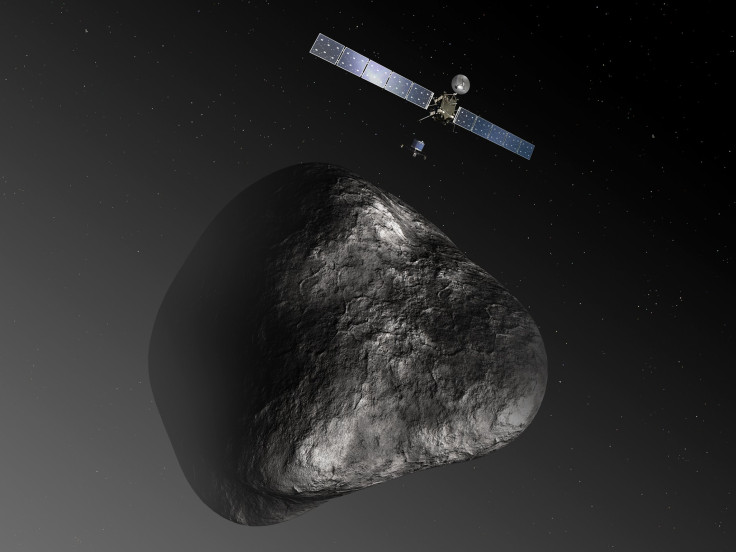Comet-Hunting Rosetta Gets Ready For Its Date With Comet 67P/Churyumov–Gerasimenko Next Month

The decade-long comet-hunting Rosetta mission is nearing completion. The European Space Agency announced a series of burns on Wednesday which reduces the speed of the Rosetta satellite prior to its Aug. 6 rendezvous with its target, Comet 67P/Churyumov–Gerasimenko.
Rosetta was first launched in March 2004, performed a couple of gravity assists and entered deep space hibernation in 2011. As part of the "Wake Up Rosetta" campaign, ESA, and the world, waited to see if Rosetta would respond after three years of being put in a suspended state. It took some time but the satellite was fully operational and the first series of orbital maneuvers began in May. As Rosetta is traveling through the solar system, so too is Comet 67P/Churyumov–Gerasimenko.
In the beginning of June, ESA performed three orbit correction maneuvers, dubbed "big burns" and performed a fourth burn on Wednesday. The big burns were performed every two weeks and ESA will begin to perform weekly burns. The weekly burns, "Far Approach Trajectory" maneuvers, will change the velocity of the satellite and have been dubbed the "Four Fatties" by Rosetta's blog editors. The next burn is scheduled for July 9.
The Rosetta satellite will be the first to chase and orbit a comet and will also place a lander on comet 67P/C-G. The Philae lander will be delivered on Nov. 11, 2014. Just because Rosetta has yet to reach its target that does not mean ESA scientists are not collecting data on Comet 67P/Churyumov–Gerasimenko.
According to ESA, Rosetta was able to observe the comet using its main navigation camera, NAVCAM, while its Microwave Instrument for Rosetta Orbiter, MIRO, detected plenty of water being released by the comet. The comet is "sweating" close to two small cups of water. Sam Gulkis, MIRO's principal investigator at NASA’s Jet Propulsion Laboratory, said in a statement, "At this rate, the comet would fill an Olympic-size swimming pool in about 100 days. But, as it gets closer to the Sun, the gas production rate will increase significantly. With Rosetta, we have an amazing vantage point to observe these changes up close and learn more about exactly why they happen."
According to NASA, Rosetta is between Mars and Jupiter, 261 million miles away from Earth.
Today (1 July) there's <60 000 km between me & comet #67P... and 36 days to arrival! One way signal travel time today is 23 mins 18 secs
— ESA Rosetta Mission (@ESA_Rosetta) July 1, 2014© Copyright IBTimes 2024. All rights reserved.






















